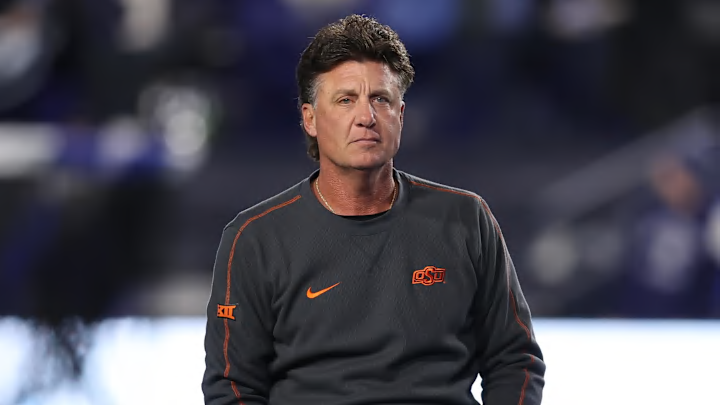Was the Timing Right? Oklahoma State’s Firing of Mike Gundy Sparks Transfer Portal Chaos
The debate around Mike Gundy’s recent firing from Oklahoma State isn’t just about whether it was the right move to be let go—it’s about when it happened. With Gundy now out and a $15 million buyout heading his way, the ripple effects of his departure are hitting the program hard, and fast.
Why? Because under new NCAA rules tied to the evolving landscape of NIL and player mobility, the dismissal of a head coach automatically triggers a 30-day transfer window for players. That means the moment Gundy was let go, just three weeks into the season, OSU athletes were free to explore new opportunities, immediately. Which has been the case for a lot of their players thus far.
Each week since the firing, more players have entered the transfer portal, leaving a roster already lacking depth scrambling to field a competitive lineup. In some cases, the Cowboys have lost not just role players, but starters and key contributors, adding even more uncertainty to a season that was already teetering.
The Bigger Cost of Firing Midseason
While many fans and critics agree that Gundy’s time at Oklahoma State may have run its course, especially after losing 11 of his last 12 games and souring his relationship with a large portion of the fan base, the timing of the move has become the real issue.
Yes, firing him early gave some players a head start on their next move, which can be seen as fair to them. But from a program-building perspective, it put the current coaching staff and administration in crisis mode. Roster instability, constant lineup reshuffling, and a lack of clarity in leadership have all taken a toll. The team, already off to a rough start this season, now finds itself even further behind the curve.
If this decision had been made last offseason, the university could have navigated the coaching change during the traditional transfer period and had a full offseason to adjust. In fact, there were already signs it might happen: Gundy and the university restructured his contract to include a reduced buyout, often a telltale sign that both sides are preparing for a possible split.
On the other hand, waiting until the end of this season might have helped maintain some semblance of roster cohesion through 2025, giving players and staff a clearer short-term picture and allowing the program to enter a true rebuilding phase with more strategic planning.
NIL Era = Strategic Timing
In the past, midseason firings were often seen as bold or necessary moves, signals to fans and recruits that a change was coming. But in the NIL and transfer portal era, the cost of when you fire a coach may outweigh the benefits of a clean break.
Now, a head coaching change opens the floodgates, giving players immediate agency to leave and explore better opportunities with often more NIL money on the table. For programs like Oklahoma State, which don’t have the same deep-pocketed NIL infrastructure as some Power Five peers, midseason roster bleeding can be devastating.
In essence, firing a coach too early in the season doesn’t just reset the staff, it can now unravel the entire roster.
Final Thoughts: Right Move, Wrong Time?
There’s a growing consensus that Mike Gundy’s era in Stillwater had run its course. His record over the past year and his increasingly strained relationship with fans and the university painted a clear picture. But did Oklahoma State pull the trigger too soon?
If the goal was to protect the future of the program, stabilize recruiting, and minimize player losses, then waiting until the end of the season—or pulling the plug during the offseason when contract restructuring suggested it was on the table—might have been the smarter move.
Instead, the Cowboys are now facing a perfect storm: roster instability, uncertain leadership, and a shrinking talent pool week by week. Whether that’s worth a head start on the rebuild is a question the program, along with the fans, will be asking for a long time.
